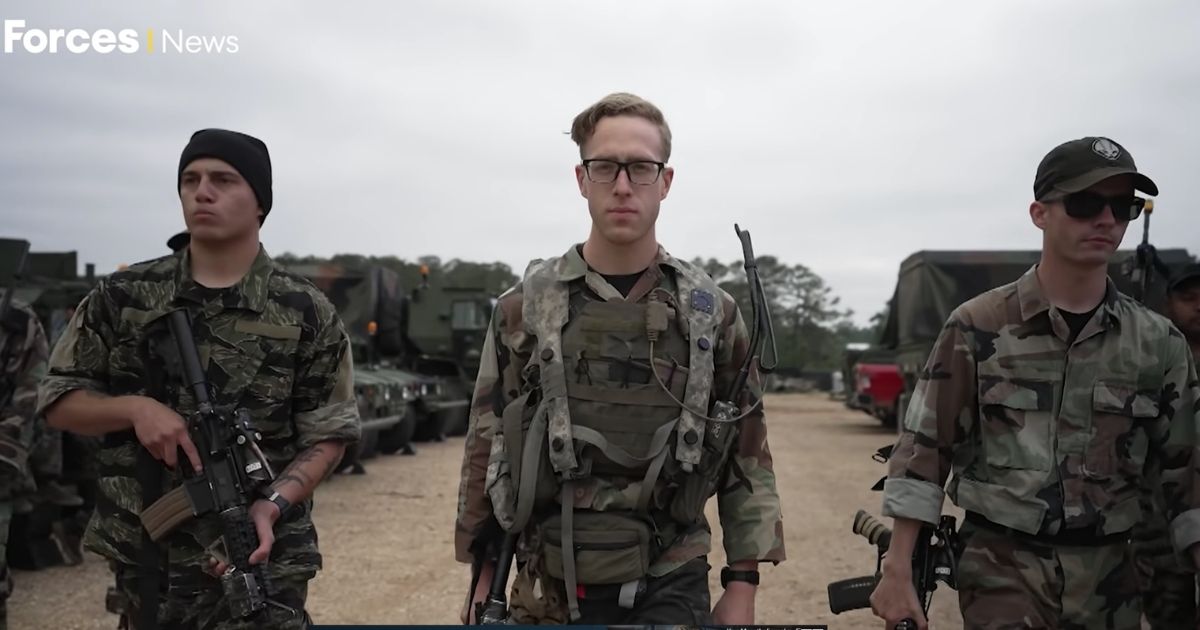They’re called the “Geronimo Battalion.” They have mismatched uniforms. They’re based in the swamps of Louisiana. They’re called the “most hated unit in the Army.”
And they’re doing their job perfectly.
The “Geronimo” Battalion is actually the 1st Battalion, 509th Infantry Regiment, as the U.S. Army notes on its website. The battalion is based at Fort Polk in Louisiana. Its soldiers’ main mission is to serve as the OPFOR — Opposing Force — at the U.S. Army’s Joint Readiness Training Center during military exercises.
What does this mean? Effectively, for training purposes, they’re the enemy. They know every nook and cranny of the swampy terrain they’re defending. Visiting troops who are training against them don’t.
As one reporter for Forces News— a digital arm of the British Forces Broadcasting Service — put it, “Their mission is to give the visiting soldiers hell.”
Forces News was granted access to the training grounds with the U.K.’s Welsh Cavalry, which took part in Exercise Rattlesnake in June.
The Joint Readiness Training Center has a few names. If you want to get all acronym-y, it’s the JRTC. However, another name for it is “The Box” — and it’s certainly a claustrophobic, hellish environment for those who participate in Exercise Rattlesnake.
“At the heart and soul of that is [to] act in a way that will force your adversary or your opponent to really have to deal with a lot of problems simultaneously,” said U.S. Army Maj. Micah Chapman, the executive officer of the “Geronimo” Battalion.
“The Box” pits opposing soldiers against “Geronimo” and stretches them to their limit. Forces News was with British Army personnel embedded with American troops during the grueling 12-day exercise.
It may be arduous, but it serves its purpose.
“We trained soldiers before World War II, we trained soldiers before the Vietnam conflict, we trained soldiers before deployments to Afghanistan and Iraq and now we’re preparing them for future battlefields,” said Brigadier General David Doyle, the Commanding General JRTC and Fort Polk.
They prepare against “Geronimo” — “a highly trained local force, used to winning in battle [and] familiar with the terrain,” Forces reported.
Meanwhile, half the British troops were dropped into the battlefield on Black Hawk helicopters.
“With many carrying more than 50kg [110 lbs] on their backs, once inside ‘The Box’, it is their first opportunity to see the ground,” Forces reported.
“The exercise begins with the recce platoon walking through the night on a 15km [9.3 mile] mission to conduct long-range reconnaissance and surveillance on the enemy and report back vital intelligence.”
This should give you a good idea of why they’re the “most hated unit in the Army.”
[firefly_embed]
[/firefly_embed]
The members of the “Geronimo” Battalion stand out because of their different uniforms — one way to differentiate themselves from the other soldiers. In 2004, ABC News reported they donned Iraqi civilian clothes to mimic insurgents and terrorists.
While they’re small in number, that just plays into the 509th’s underdog mentality.
“Within my battalion, there are about 627 soldiers assigned. For rotation, I also receive about an additional 400 augmentee soldiers,” Chapman said.
“In comparison, typically there are about 5,000 soldiers on average that will come here to train against us and fight us,” he added.
“So in terms of overmatch, certainly we are the underdog, but that also plays into our favor in terms of why we’re so hated. It’s because we like playing as the guy who’s operating against all odds.”
The unit is also allowed unconventional weapons and tactics. This includes “off-the-shelf drones” which drop simulated grenades. One buzz from the drone and you’re suddenly a dead man — at least by the standards of Exercise Rattlesnake.
And it’s not just the drones that the opposing forces have to fight against.
Sergeant 1st Class Michael Angel, who’s with JRTC’s Operations Group, talked to Forces about what you’ll have to face inside “The Box.”
“Poison ivy, poison oak and poison sumac are now coming back out, being as it’s the springtime, so try to avoid getting messed up on your hands and rubbing your face,” he said.
“Heavy rains and tornadoes. Pigs, we’ve had a lot of pig encounters, so wild boar.
“There are six extremely poisonous snakes in this area and the cottonmouth likes to chase soldiers.”
Even still, Brigadier General Doyle was impressed with the British Army’s performance.
“What I watched them do is show just mastery of the fundamentals,” he said. “We had a long-range reconnaissance mission … they walked through some of the worst terrain we have here in Fort Polk.
“They got into a position of relative advantage, they were able to observe the terrain, they were able to render phenomenal accurate reporting about what the enemy was doing and then they passed the Wild Boar, 230 Infantry into the fight,” he continued. “It was masterfully done.”
And that’s the point. They may be the “most hated unit in the Army,” as previously stated, but they do their job effectively. They make our soldiers better. It’s a much wiser thing to discover your deficiencies in the steaming swamps of Louisiana than doing so when faced with insurgents firing live bullets. This is what our military should be about.
This article appeared originally on The Western Journal.

























 Continue with Google
Continue with Google